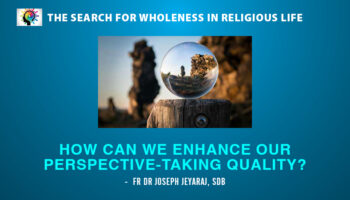In a short span of over a decade, social media has changed the way we communicate today. Facebook was launched in 2004, then came YouTube, Twitter, Orkut, Instagram and other social media platforms. Today, social media plays a significant role and is being used in ways that shape politics, business, education, social issues, world culture, careers and many more.
As per Digital Economic Value Index, 25% Of the world’s economy will be digital by 2020 and the estimated worldwide digital advertising expenditure will be around $335.5 billion.
Internet users spend more time on social media sites than ever before. The more time we spend on something, the greater influence it has on us. As of now, almost one fourth of world population are on facebook and many millions are on whatsapp, twitter, linkedIn, Snapchat, Pinterest, Instagram etc.
Source: https://dustn.tv/social-media-statistics/
Influence of Social Media
Digital revolution has changed how people gather and consume information. Social media has the potential to shape public conversations and perceptions, opinions, brand awareness, and to attract customers and potential partners. Gone are the days when people had to rely on companies to tell them what to buy and Church to tell what faith habits they have to wear. Faith related discussions not only happens in the church and families but also among reliable friends and digital resources. This is where the relevance of social media plays an important role – in making available relevant content to re-evangelize the nominal Catholics.
Catholic Church and Social Media
When the reach of social media is among billions of people from various cultures, how can the church ignore its potential to influence the cultures and people. It is our responsibility as Catholics to bring church’s teachings to this vast population and fulfil the great commission that Jesus had given to each one of us. The Vatican has taken a serious study of this impact and it has a significant presence and influence across major social platforms.
Pope Francis is one of the most followed world leaders on Twitter with almost 18 million followers. When Pope opened Instagram account, he set a record by gaining more than a million Instagram followers in under 24 hours. Some of the dioceses in the US and Europe have followed the trend and have a digital marketing team to concentrate on social media platforms to bring the communities closer to Jesus. However, the digital marketing initiatives are currently at infancy, in many of the Indian dioceses.
Digital addiction and social media overuse are a cause of worry especially among today’s youth. Though Pope Francis has been making the people aware about the dangers of social media overuse, he himself encourages Catholics to embrace digital media platforms to start a dialogue of faith and promote a culture of respect. “It is not technology which determines whether or not communication is authentic, but rather the human heart and our capacity to use wisely the means at our disposal,” the Pope said. Pope Benedict XVI also advocated the use of social media to communicate the Gospel message to the tech-savvy younger audience.
Some of the catholic channels and groups have been making good efforts to keep the audience involved through some relevant and creative content.


Evangelizing young people
If we look at the great evangelizers, we observe that they were in a place where people were and communicated to them in their own language. Today’s younger generation spend a lot of their time on their computers and mobile phones. They are in their own digital space. We need to be there where they are, speak to them in their language about the topics that engage them and provoke them and challenge them.
Opening a social media account/page and posting some pictures and posts is not enough to fulfill the purpose of reaching out to your prospective audience. To be an effective evangelizer on social media, we need to take care of at least the following 10 points.
- Vision/Direction: Knowing the target audience, their behaviours, where do we wish to lead them.
- Profiling : A social profiling of the target audience will help to decide on the tone and theme of a channel or a page and its content. For example, if our target audience is only women, the banner, colour of the page, branding of the page, timing of the post etc will change accordingly.
- Consistency: There should be a consistency in terms of the branding and identity, theme, tone and colour of designs, frequency of each posts etc. In order for an audience to rely on a page or channel, people expect some kind of regularity in terms of the post/content.
- Content: Without the right content, you won’t be able to communicate the message. A thought provoking, interesting, spiritual and actionable content is necessary for evangelizing through social media. Without quality content, social media has little appeal. It’s important that one understand the type of content they should provide to their audience to achieve the engagement and reach they’re looking for. Type of contents include blog posts, e-books, case studies, templates, infographics, videos, illustrations, podcasts, GIFFs, animated videos etc.
- Quality : In this digital age there are millions of materials available. People are very choosy about the things they listen to, watch and read. Amongst these, the quality and creativity of the content in terms of design, video and audio quality matters. The attention to these details helps to build one’s audience.
- Listening and Engagement: Interactivity is the one feature that differentiates social media from traditional media. Answering the comments, queries of the audience on a regular basis are necessary to engage with them. One has to be a good listener to build meaningful connections on social media. Listening helps you succeed in cultivating deeper digital connections. There are several tactics one can employ to bring your relationships with your audience to the next level – asking for reviews and comments, polls, responding to comments in real time, tagging, reference to others’ content, creating facebook or LinkedIn groups etc.
- Research and Analysis: A regular research on the expected audience and analysis of audience behaviour data will help one to improve on the content and the campaign. Google analytics and channel insights helps in getting those needed data to improve their experience.
- Creative Social Media Advertising: A regular campaign with very attractive and creative design helps one to reach out to those people whom we never imagine to reach through church, institutions or any social gatherings. Organic reach on social media has significantly decreased. For example, organic reach on Facebook for an average business has decreased dramatically from 26% in 2011 to less than 1 percent in 2017. Unlike traditional advertisements that tend to be interruptive, digital advertisements can be highly engaging, useful, and targeted, while bringing value to the intended audience. Properly implemented digital advertisements can help deliver the right content to the preferred audience according their behaviour and age, making spending on advertising much more effective.
- Not go after numbers: Numbers excites you and give you the needed boost but we shouldn’t lose the purpose and vision of the campaign by concentrating only on improving the number of followers and likes.
- Prayer: Whatever forum or platform we use, if our purpose is to evangelize through social media, we need to be attuned to Him. We can give only what we have and realize the fact that we are in a spiritual warfare.
The world of social media offers great potential for those planning to spread the Gospel message. Social media, through its vast potential and interactive nature has to become a tool for modern discipleship. The church has to encourage and motivate for more digital disciples to reach to the unreached; encourage the discouraged; motivate the disillusioned and give hope for the hopeless.
Antony A J
To subscribe to the magazine, click Subscribe






